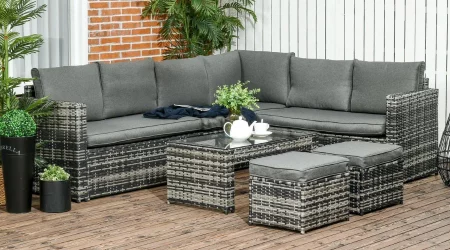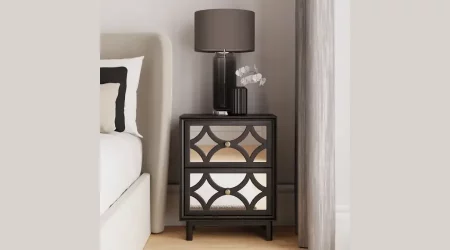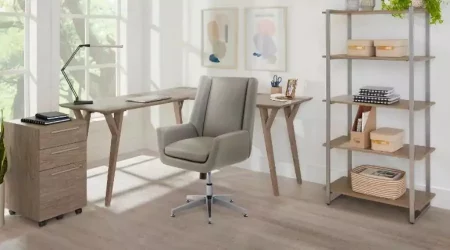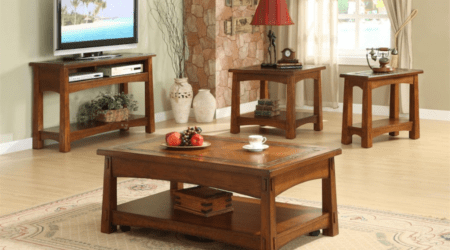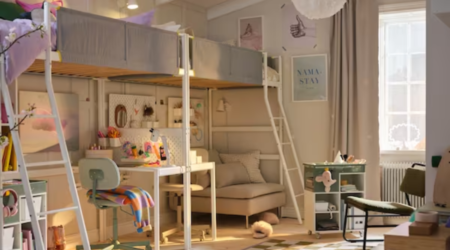Furniture is an essential part of every home. It not only adds functionality and aesthetics but also reflects your personality and taste. However, choosing the perfect furniture for your home can be a daunting task. With so many options available in the market, it can be overwhelming to make the right choice. But fear not, as we bring you a comprehensive guide on how to choose the perfect furniture for your home. From determining your style to considering the space available, we’ll cover all the aspects you need to keep in mind while shopping for furniture. Whether you’re moving into a new home or just looking to refresh your current decor, this guide will help you make informed decisions and transform your space into a beautiful and functional haven. So, let’s dive in and discover the secrets to picking the perfect furniture for your home!
Understanding Your Personal Style
One of the most important things to consider when choosing furniture is your personal style. Your furniture should reflect your personality and taste and should make you feel comfortable and happy in your home. To determine your personal style, start by looking at your current decor and taking note of the colors, patterns, and materials that you are drawn to. You can also create a mood board or Pinterest board to gather inspiration and ideas.
Once you have a clear idea of your personal style, you can start looking for furniture that fits your aesthetic. Keep in mind that your furniture doesn’t have to match perfectly, but it should complement your overall decor. For example, if you have a modern and minimalist style, you may want to look for furniture with clean lines and neutral colors. On the other hand, if you have a bohemian style, you may want to incorporate more natural materials and colorful patterns.
When selecting furniture, it’s important to consider the overall theme of your home. If you have an open floor plan, you may want to choose furniture that creates a cohesive look throughout the space. Additionally, you should consider the function of each room and choose furniture that is both stylish and practical.
Measuring Your Space and Assessing Your Needs
Before you start buying furniture, it’s important to measure your space and assess your needs. This will help you determine the right size and type of furniture for each room. Begin by measuring the dimensions of each room, taking note of any architectural features such as windows, doors, and built-in shelving.
Next, consider the function of each room and the furniture that will be used in it. For example, a living room may require a sofa, coffee table, and armchair, while a bedroom may require a bed, dresser, and nightstand. It’s important to choose furniture that fits the scale of each room and allows for ample space to move around.
When measuring your space, it’s also important to consider the flow of traffic and the placement of furniture. For example, you may want to leave enough space between the sofa and coffee table to allow for easy movement around the room. Additionally, you should consider the placement of electrical outlets and lighting fixtures when choosing furniture.
Choosing the Right Materials and Finishes
The materials and finishes of your furniture can make a big impact on the overall look and feel of your home. When selecting furniture, consider the durability and maintenance requirements of each material. For example, leather furniture is durable and easy to clean, but may require conditioning to maintain its appearance. On the other hand, fabric upholstery may require more frequent cleaning but can offer a wider range of colors and patterns.
In addition to upholstery, you should also consider the material and finish of the frame and legs of your furniture. Wood, metal, and glass are common materials used in furniture frames, each offering its own unique look and feel. When selecting finishes, consider the overall color scheme of your home and choose finishes that complement your decor.
Considering Functionality and Durability
When selecting furniture, it’s important to consider both functionality and durability. Your furniture should not only look good but also serve its intended purpose. For example, a dining table should be sturdy enough to hold the weight of dishes and food, while a sofa should be comfortable enough to sit on for extended periods of time.
Durability is also important when selecting furniture. Investing in high-quality, durable furniture can save you money in the long run, as you won’t have to replace it as often. Consider the materials and construction of each piece of furniture, and choose pieces that are built to last.
Matching Colors and Patterns
Matching colors and patterns can be a daunting task, but it’s an important aspect of choosing furniture for your home. When selecting furniture, consider the color scheme of your home and choose pieces that complement or contrast with your decor. For example, if you have a neutral color scheme, you may want to add pops of color with brightly colored accent pieces.
When selecting patterns, consider the scale and style of your existing decor. Large-scale patterns can make a bold statement, while smaller patterns can add subtle texture and interest. Additionally, you should consider the placement of patterns in each room. For example, you may want to use bold patterns on accent pillows and throws, while keeping larger furniture pieces more neutral.
Mixing and Matching Furniture Styles
Mixing and matching furniture styles can add interest and depth to your home decor. However, it’s important to do so in a thoughtful and intentional way. When mixing styles, consider the overall theme of your home and choose pieces that complement or contrast with your existing furniture.
One way to mix and match furniture styles is to choose pieces with similar lines and shapes. For example, you may want to pair a mid-century modern sofa with a traditional armchair. Additionally, you can mix and match furniture finishes and materials, such as pairing a wood dining table with metal chairs.
When mixing and matching furniture styles, it’s important to maintain a cohesive look throughout your home. Choose a few key pieces to mix and match, and keep the rest of your furniture more consistent in style.
Coordinating Furniture with Decor and Accessories
Coordinating furniture with decor and accessories can help tie your home decor together and create a cohesive look. When selecting decor and accessories, consider the colors and patterns of your furniture, and choose pieces that complement or contrast with your existing decor.
One way to coordinate furniture with decor and accessories is to choose a color palette and stick to it throughout your home. For example, you may want to choose a neutral color scheme with pops of bright colors. Additionally, you can use decorative pillows, throws, and curtains to tie your furniture together and create a cohesive look throughout your space.
Shopping for Furniture: Online vs In-Store
When shopping for furniture, you have the option of shopping online or in-store. Each option has its own benefits and drawbacks. When shopping online, you have access to a wider range of furniture options and can easily compare prices and styles. However, you can’t physically touch or see the furniture before making a purchase.
When shopping in-store, you have the opportunity to see and touch the furniture before making a purchase. Additionally, you can work with a salesperson to get advice and recommendations on furniture styles and materials. However, you may have a more limited selection and may have to visit multiple stores to find the perfect piece.
Furniture Maintenance and Care
Proper maintenance and care of your furniture can help prolong its lifespan and keep it looking new for longer. When selecting furniture, consider the maintenance requirements of each material and finish. Additionally, follow the manufacturer’s instructions for cleaning and care.
Regular cleaning and maintenance can also help prevent damage and wear and tear. For example, regularly dusting and vacuuming your furniture can help prevent scratches and stains. Additionally, using furniture covers and coasters can help protect your furniture from spills and scratches.
Conclusion: Enjoying Your Perfect Furniture
Choosing the perfect furniture for your home can be a daunting task, but with these tips and tricks, you can make informed decisions and transform your space into a beautiful and functional haven. Remember to consider your personal style, assess your needs and space, choose the right materials and finishes, and consider functionality and durability. Additionally, don’t be afraid to mix and match furniture styles and coordinate your furniture with decor and accessories. With proper maintenance and care, your furniture can last for years to come, allowing you to enjoy your perfect space for years to come.





